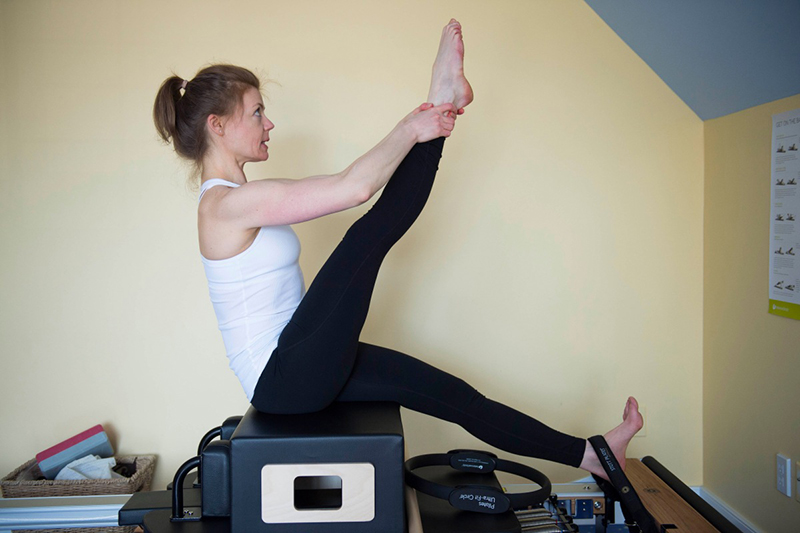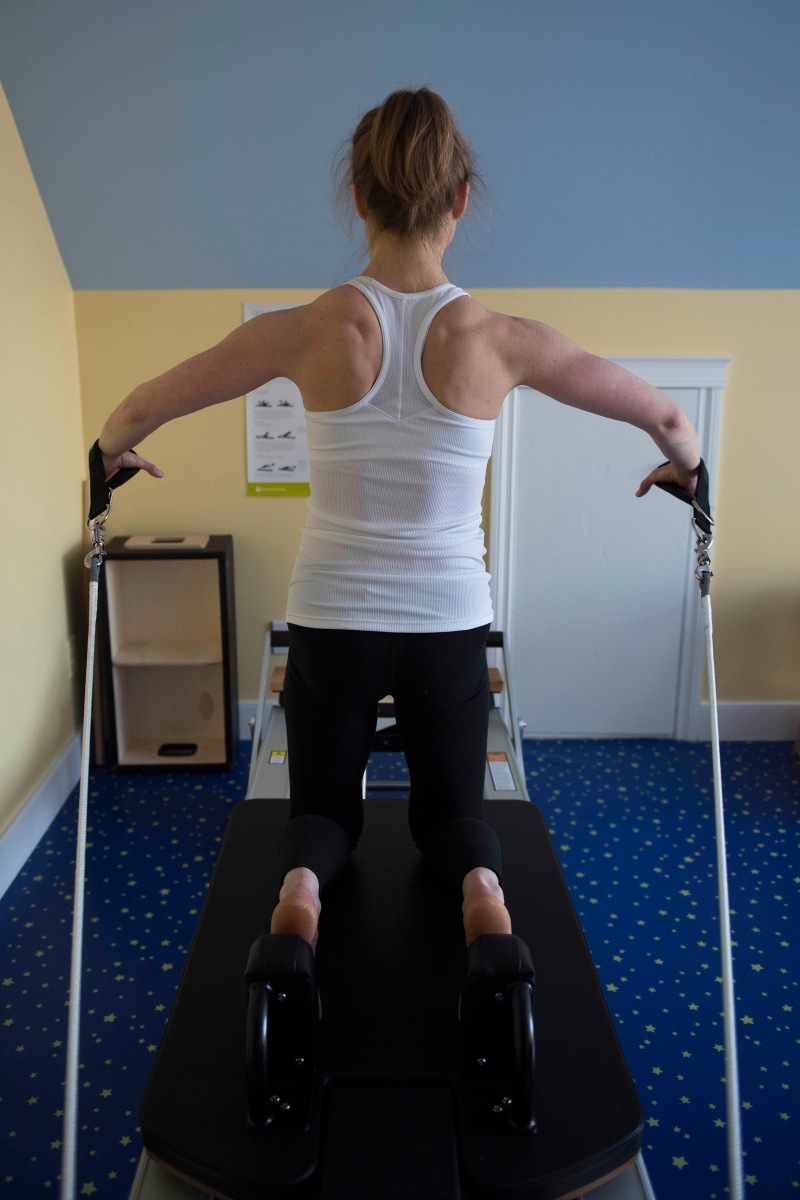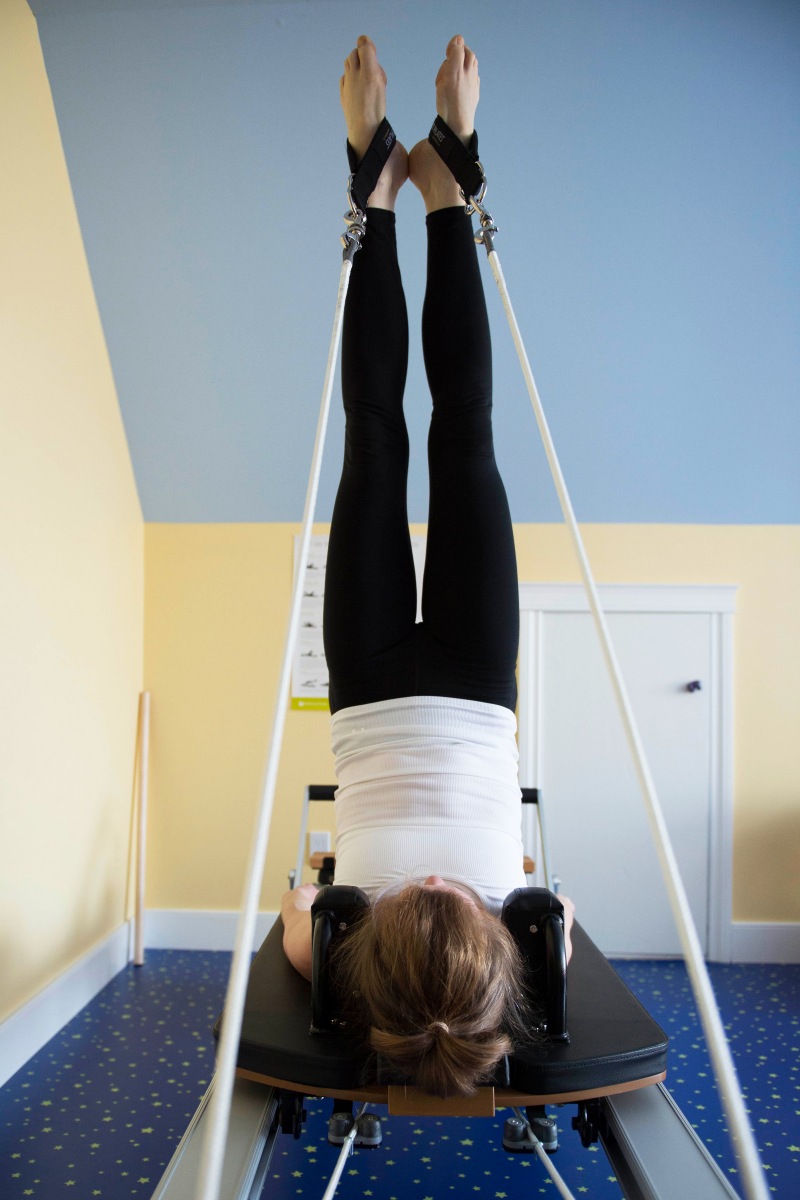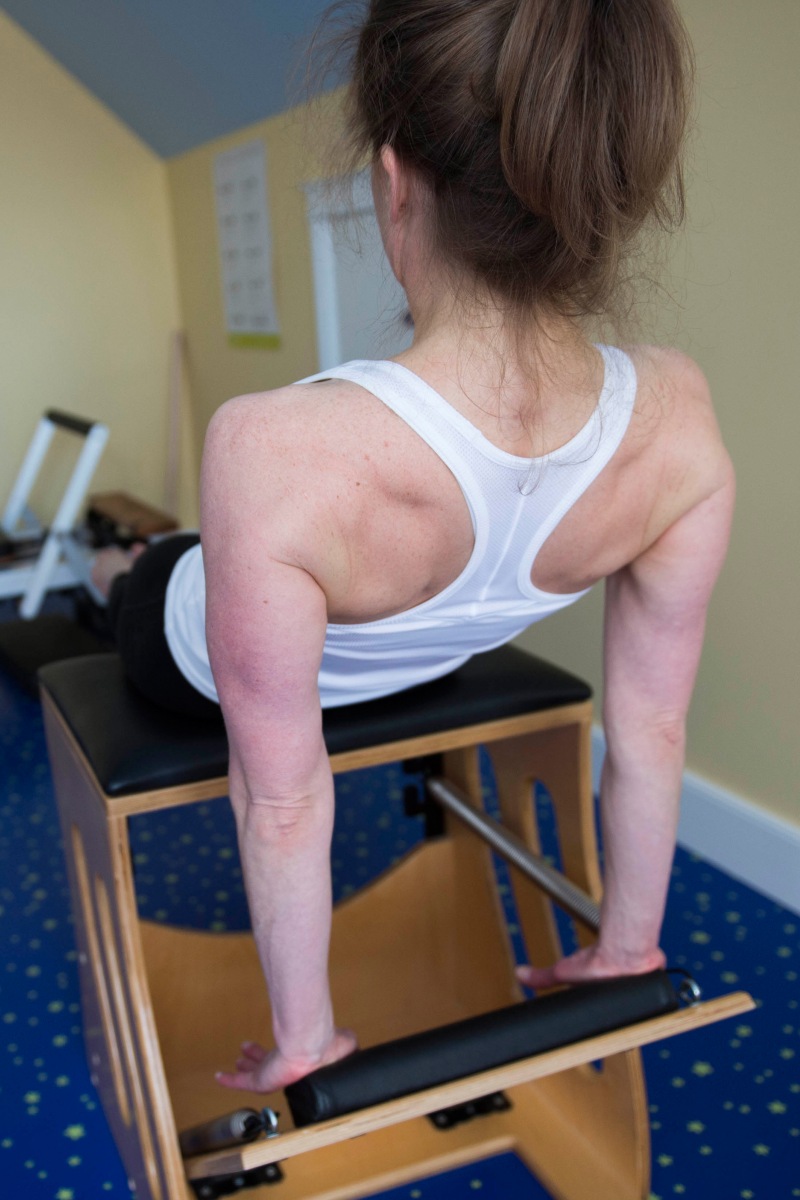Pilates Principles
The very core principles of Pilates is based on: Centering, Concentration, Control, Precision, Flow, Breath. We also focus on efficiency of each movement. In between exercises, in transitions, we achieve a quality workout and maintain a well-balanced body.
Mind-body connection
By focusing on proper breathing, correct spinal and pelvic alignment, and concentration on smooth, flowing movement, you become in tune with your body – body awareness. You will be in control of your body movements. In Pilates, the quality of movement is valued over quantity of repetitions. Coordination of breathing and movement guarantees maximum power and efficiency. Proper breath also can reduce stress.
Develop a strong core – flat abdominals and a strong back
Pilates exercises develop a strong “core,” Powerhouse or center of the body. The core consists of the deep abdominal muscles along with the muscles closest to the spine. Control of the core is achieved by integrating the trunk, pelvis and shoulder girdle.
Gain long, lean muscles and flexibility
More conventional or traditional workouts are weight bearing and tend to build short, bulky muscles – the type most prone to injury. Pilates elongates and strengthens, improving muscle elasticity and joint mobility. A body with balanced strength and flexibility is less likely to be injured.
Learn how to move efficiently
Pilates is a whole body workout – integrating all muscles of the body with continuous movements. By developing proper technique, you can actually re-train your body to move in safer, more efficient patterns of motion – invaluable for injury recovery, sports performance, good posture and optimal health.
Create an evenly conditioned body, improve sports performance, and prevent injuries
Conventional workouts tend to work the same muscles. This means weak muscles tend to get weaker and strong muscles tend to get stronger. The result is muscular imbalance – a primary cause of injury and chronic back pain. Pilates conditions the whole body, even the ankles and feet. No muscle group is over trained or under trained. Your entire musculature is evenly balanced and conditioned, helping you enjoy daily activities and sports with greater ease, better performance and less chance of injury. That’s why so many professional sports teams and elite athletes now use Pilates as a critical part of their training regimen.
Pilates is challenging but adaptable
Pilates is also an extremely flexible exercise system. Modifications to the exercises allow for a range of difficulty ranging from beginning to advanced. Get the workout that best suits you now, and increase the intensity as your body conditioning improves.






